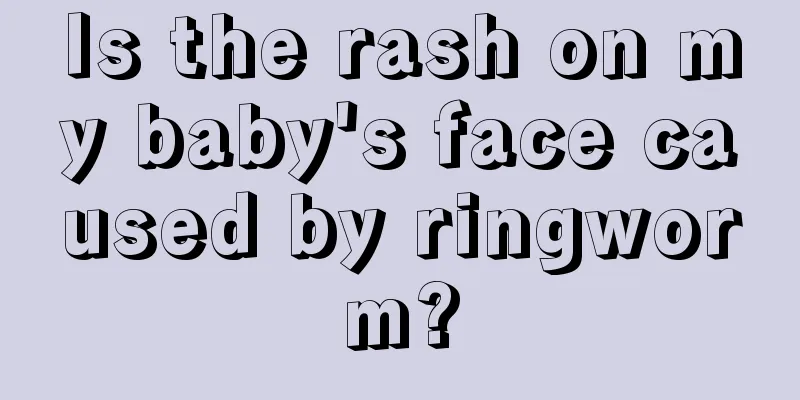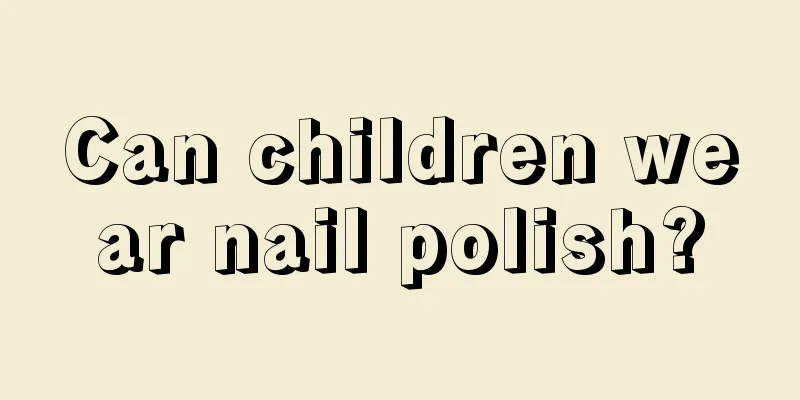Baby's runny nose in summer

|
Parents all pay great attention to the physical health of their babies. Once the baby has any health problems, parents will be very anxious. The baby's body is inherently fragile, and once a disease occurs, the baby's body resistance will be reduced. However, many parents who have raised children should know that many babies will have yellow snot in the summer. So what is the reason for the baby's runny yellow nose in summer? In fact, a runny nose is not entirely a bad thing, and different colors of snot represent different physical conditions of the baby. ◔ There is a layer of mucous membrane in our nasal cavity, and the goblet cells on the mucosa continuously secrete mucin. Together with the fluid secreted from the submucosal glands, the tissue fluid that seeps out of the capillaries, and the tears that flow into the nasal cavity along the nasolacrimal duct, they mix to form mucus in the nasal cavity. This mucus is snot, which is the protective membrane of the nose. ◔ Mucus helps us moisten and warm the air we inhale, and can also stick to dust and bacteria in the air to form a natural protective barrier. At the same time, mucus also contains a small amount of antibodies and lysozyme, which help us kill microorganisms and resist their invasion. What do different colored snot mean? 1. Transparent snot Having a runny nose when it's cold doesn't necessarily mean you have a cold, but if you still have a lot of mucus when it's warm, you should be careful! This may be because the nasal mucosa is secreting a large amount of mucus to wash away the disease-causing microorganisms that are attached to you to prevent you from getting sick. It is an early manifestation of resistance to infection. At this time, you need to rest more and drink more water to maintain your immunity and enhance metabolism. Because once you fail to flush, you'll start to catch a cold. If the baby has an allergic constitution and has symptoms such as runny nose, nasal congestion, itchy nose, sneezing, etc., which are more obvious especially when getting up in the morning, mothers should pay attention to whether the baby has allergic rhinitis. In this case, it is recommended to check the child for allergens, or take nasal or oral medications according to the doctor's advice, or rinse the nasal passages with saline. 2. Milky white nasal discharge Be careful when milky white mucus appears. When the tissues in the nasal cavity begin to become congested and swollen, and the nasal mucosa thickens, the secretion of normal tissue fluid slows down. The normally clear and healthy mucus becomes sticky and milky white due to lack of sufficient water and increased mucin concentration. In this case, it means that we have been infected by microorganisms (including viruses and bacteria, etc.), and it is likely to be an early symptom of a cold, so we need to be vigilant. 3. Yellow snot Yellow snot means that our infection is escalating because there is a type of immune cell called neutrophils, which help us by engulfing hostile microorganisms and then oxidizing them to death. The neutrophils that die after completing their mission will dye the nasal mucus yellow. In the late stage of a common cold, yellow purulent nasal discharge will appear So, when yellow snot appears, it means that the immune cells are fighting against foreign invaders, and our cold symptoms may become obvious, even causing a fever. This is also why when we blow our nose when we have a bad cold, the color is often yellow. 4. Green snot Green snot is caused by the invading microbial enemy being too strong, too many white blood cells participating in the battle or dying, and the remains of neutrophils on the battlefield of the nasal mucosa, making the mucus thicker, stickier and greener. At this time, we can ask the doctor to prescribe some prescription medicines for us according to our physical condition to relieve the symptoms of cold and fever. If our snot turns yellow and green and does not improve for more than 10 days, and is accompanied by nasal congestion and headache, please take your child to see a doctor to check whether he or she has sinusitis. If so, you need to follow the doctor's advice and receive treatment in time, otherwise it will be difficult to recover, and the disease will recur, affecting your quality of life. |
<<: What should I do if my two-year-old baby always has a runny nose?
>>: Baby coughs and runny nose after fever subsides
Recommend
Thirteen-month-old baby food recipes
After the baby has been fed with breast milk for ...
At what age do children start to lose their teeth?
Children are the big treasures of the family, and...
What are the symptoms and treatment measures of muscular dystrophy in children?
Nowadays, many children suffer from muscular dyst...
What should we do if children have dental polyps?
Many children do not pay attention to their daily...
What should I do if my baby has ringworm on his scalp? Mothers should learn these measures
Many babies have some white skin on their heads, ...
Reasons for weaning babies at the right months
In fact, in daily life, many newborns grow up in ...
What to do if your child has indigestion
Food accumulation means that children consume too...
How to control childhood obesity
Everyone knows that although chubby children look...
Are obese children dangerous?
In life, the elders may have suffered the hardshi...
Causes of fever in children's hands and feet
Relatively speaking, children's constitution ...
Is it good for children to eat donkey-hide gelatin?
Donkey-hide gelatin is a very suitable tonic for ...
How to take care of the small red spots on your baby’s legs?
The presence of small red spots on the body is no...
What should babies eat for diarrhea? Diet therapy is the most important
The baby's physique is very weak, so if you d...
When is the best time for young children to take cod liver oil?
The nutritional components of cod liver oil are v...
Is it good for babies to sleep frequently?
Many mothers have found that newborn babies alway...









